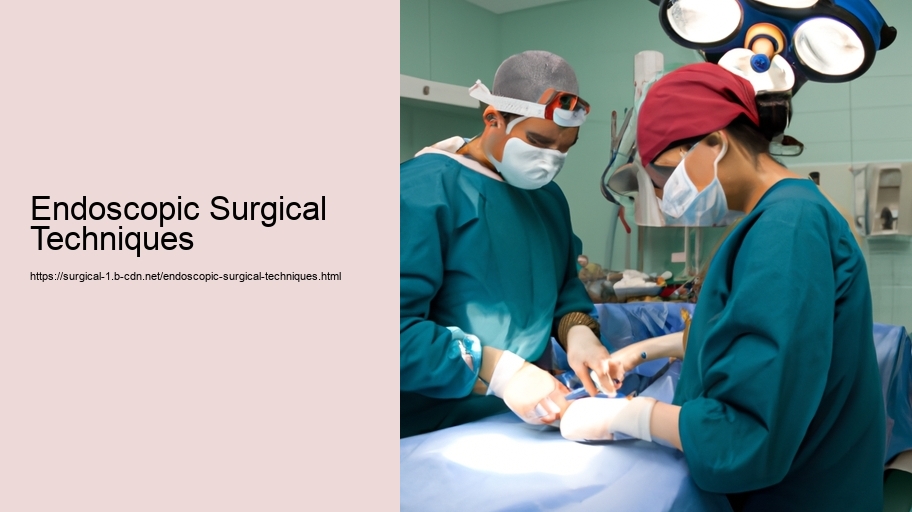Endoscopic surgical techniques represent a significant advancement in the field of medicine, providing a less invasive alternative to traditional open surgery. Endoscopy involves the use of specialized instruments and a camera to perform procedures through small incisions or natural body openings, offering numerous benefits to both patients and surgeons.
The history of endoscopic surgery dates back to the early 19th century when Philipp Bozzini developed the "Lichtleiter," a primitive endoscope to view body cavities. Over time, with technological innovations and improved optical systems, endoscopy has evolved to become an integral part of surgical practice across various specialties, including gastroenterology, urology, gynecology, and general surgery.
One of the most significant advantages of endoscopic surgical techniques is the reduction in trauma to the body. Traditional open surgery often requires large incisions to access the area of interest, which can lead to increased pain, a higher risk of infection, and a longer recovery period. In contrast, endoscopic surgery involves making small incisions or using natural orifices, resulting in less scarring, reduced postoperative discomfort, and a quicker return to normal activities.
Endoscopic procedures are typically performed with the aid of an endoscope, a flexible or rigid tube equipped with a light source and a camera that transmits images to a monitor, allowing the surgeon to navigate and visualize the surgical site with remarkable clarity. This enhanced visualization aids in precision and accuracy during surgery, potentially increasing the success rate of the procedure.
Common endoscopic procedures include laparoscopy, used for abdominal or pelvic surgery; arthroscopy, for joint surgeries; and bronchoscopy, for examining and treating conditions within the airways and lungs. In laparoscopic surgery, for example, instruments are inserted through small incisions in the abdominal wall, and the surgeon operates while watching the monitor, manipulating the tools to perform tasks such as cutting, suturing, and tissue removal.
Another aspect of endoscopic surgery is its role in diagnostics. Before the widespread use of endoscopic techniques, exploratory surgery was often the only method to diagnose certain conditions. Now, with endoscopy, doctors can diagnose issues without making large incisions, reducing the patient's risk and discomfort.
Technological advancements continue to refine endoscopic surgical techniques. Innovations such as high-definition cameras, robotic assistance, and improved surgical instruments have further expanded the capabilities of endoscopic surgery. Robotic systems, for instance, have enhanced the surgeon's dexterity and precision, allowing for even more complex procedures to be performed endoscopically.
The education and training for performing endoscopic surgery are rigorous, requiring surgeons to develop a unique set of skills that differ from traditional surgery. Surgeons must become adept at manipulating instruments indirectly, guided by a video monitor, and they must have a thorough understanding of the spatial relationships and anatomy as seen through the endoscope.
Despite the benefits, endoscopic surgery is not without risks. Complications can include bleeding, infection, and damage to surrounding organs or structures. However, these risks are generally lower compared to open surgery, and with a skilled surgical team, the likelihood of such complications can be minimized.
In conclusion, endoscopic surgical techniques have revolutionized the surgical field by offering safer, less invasive, and more precise options for patients. As technology continues to advance, the scope of endoscopic procedures is likely to expand, further improving patient outcomes and shaping the future of surgical care. The ability to perform complex surgeries with minimal incisions represents a paradigm shift that underscores the importance of innovation in medicine and the relentless pursuit of less burdensome treatments for patients.
